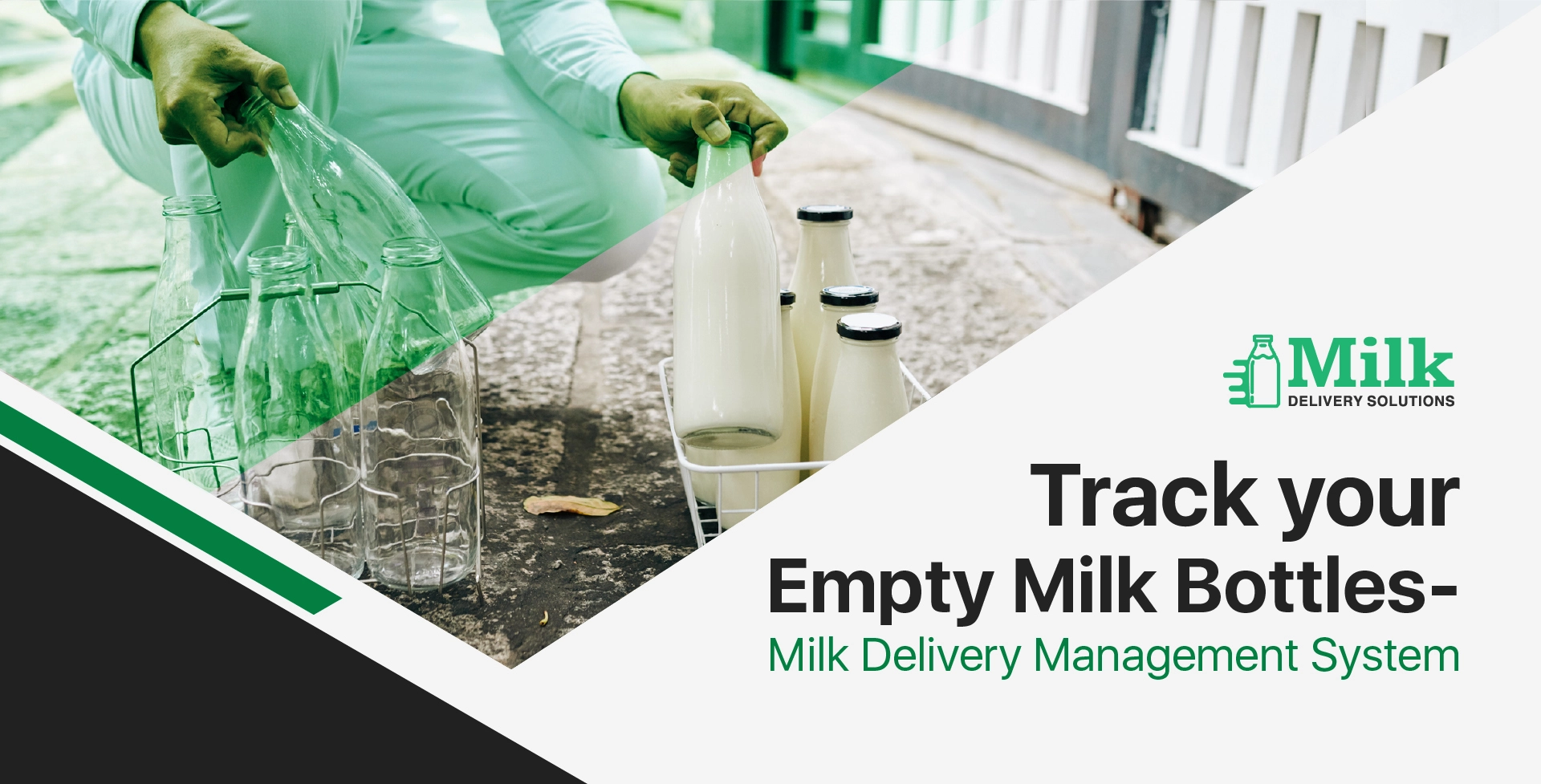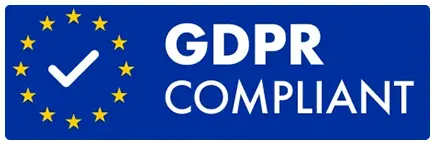Track your Empty Milk Bottles – Milk Delivery Management System
Ensuring efficient milk delivery operations is crucial for the dairy industry to meet customer demands and preserve product quality. Tracking the return of empty milk bottles is one of the most significant challenges dairy businesses face. Manual tracking procedures can be labour-intensive and prone to errors, resulting in lower operational efficiency and higher expenses, resulting in dairy businesses transforming their operations with the help of the milk delivery management system.

The blog will explore how delivery software improves dairy operations’ efficiency and helps track empty milk bottles.
The Traditional Challenge
For dairy companies, tracking empty milk bottles has always been difficult and time-consuming. Milk delivery drivers frequently use manual record-keeping techniques like spreadsheets or paper logs to track the return of empty bottles. These techniques are prone to mistakes, hold-ups, and missing data, resulting in inventory mismanagement, higher operating expenses, and disgruntled customers.
What is a Milk Delivery Management System?
A Milk Delivery Management System (MDMS) is a software solution that automates and streamlines the processes involved in managing milk delivery from suppliers to customers. It typically consists of three major components: an admin panel, a customer interface, and a driver app, each of which serves a specific purpose within the system.
Admin panel:
- Dashboard – This report provides an overview of current deliveries, pending orders, inventory status, and other key metrics.
- User management – The admin can manage user accounts such as those of customers, delivery drivers, and suppliers.
- Order management – Allows the admin to track and manage incoming orders, assign deliveries to drivers, and efficiently schedule routes.
- Inventory management – Monitors milk stock levels, manages suppliers and initiates replenishment orders as needed.
- Reporting and analytics – For informed decision-making, generate reports on sales, deliveries, customer preferences, and overall system performance.
- Settings and configuration – Customises system parameters such as delivery zones, pricing, discounts, and notifications.
Customer interface:
- Registration and login – Customers can create accounts, log in, and manage their profiles here.
- Place orders – Customers can choose between milk types, quantities, delivery schedules, and payment methods.
- Order tracking – allows customers to track the status of their orders in real-time, including estimated delivery times and order history.
- Notifications – Sends notifications and updates about order confirmations, delivery schedules, and changes in delivery status.
- Feedback and reviews – Allows customers to provide feedback and ratings on the products and services they have received.
Driver app:
- Login and profile management – Drivers can log in, manage their profiles, and view their assigned delivery routes.
- Route optimisation – Drivers are given optimised routes to ensure efficient and timely deliveries.
- Delivery management – Drivers can use this feature to confirm order pickups, update delivery status, and collect digital signatures or payments at the time of delivery.
- Communication – Facilitates communication between drivers, customers, and administrators in the event of a problem or a change in delivery schedules.
- Navigation and GPS integration – Integrates with GPS for navigation, ensuring precise delivery locations and effective route planning.
Ways in which this software helps milk businesses track empty bottles
The Milk Delivery Management System integrates these components to streamline the entire process, from order placement to fulfilment, ensuring a seamless experience for both customers and delivery personnel while providing effective tools for admin to manage and monitor operations.
Top 6 features of milk delivery software that help milk businesses track empty milk bottles
- Automated Data Entry – Milk delivery drivers can simply record the return of empty bottles using a mobile application. By doing away with the need for manual paperwork, this automated data entry lowers the possibility of error and speeds up the procedure.
- Real-Time Updates – The software enables dairy businesses to keep an accurate and current inventory of empty bottles by giving real-time updates on bottle returns. Real-time information is priceless for controlling stock levels and ensuring enough bottles are available for upcoming deliveries.
- Route Optimisation – Based on information about bottle returns, the software can optimise delivery routes, guaranteeing that drivers follow the most effective routes to optimise profits and reduce time and fuel costs.
- Customer Communication – Through the mobile app or an online portal, customers can report empty bottles and request additional deliveries, all made possible by streamlined communication, which improves client satisfaction and convenience.
- Data Analysis – Dairy businesses can use the software to gather information on bottle returns, analyse trends, and make data-driven decisions. For example, they could determine which areas have high rates of bottle returns and modify their operations accordingly.
- Inventory Management – The software keeps track of the condition of returned bottles, which helps with inventory management. It can identify broken or useless bottles so that they can be used, lowering the possibility of delivering milk in inadequate containers.
Benefits of using a delivery system
There are several advantages to using software to monitor empty milk bottles, and these can influence dairy operations:
- Improved Efficiency – Drivers can concentrate on delivering milk instead of handling paperwork thanks to automation, which lowers the need for manual labour and data entry errors. Faster deliveries and lower operating expenses are the results of this efficiency.
- Cost Savings – Efficient routes and precise inventory control reduce fuel, labour, and bottle replacement costs. The software helps businesses allocate their resources more effectively.
- Enhanced Customer Satisfaction – Real-time communication and better inventory management result in on-time delivery with fewer errors. Satisfied customers continue using the dairy and recommend it to others.
- Data-Driven Decision-Making – The software helps dairy businesses make educated decisions about inventory, staffing, and route planning by offering insightful data on bottle return patterns. Profitability may rise with this data-driven strategy.
- Sustainability – Efficient bottle tracking contributes to a more sustainable approach to dairy operations. It reduces waste and promotes recycling by ensuring that bottles are returned and reused.
- Scalability – The software helps businesses scale and grow. The software can grow to meet your needs, whether you run a large regional dairy or a small local one.
Effective tracking of empty milk bottles is essential for continual operation and to offer consumers a premium product. Milk Delivery Solutions (MDS) has automated and simplified this crucial process, which has changed the game. With features like data analysis, route optimisation, and real-time updates, the software assists dairy companies in managing their inventory, cutting expenses, and raising customer satisfaction.
With the software, dairy businesses can remain competitive, enhance sustainability, and make data-driven decisions that propel their success in a fast-paced and demanding industry. The era of manual bottle tracking is over, thanks to technology, which makes dairy operations more customer-focused, economical, and efficient.
Frequently Asked Questions(FAQs)
Q1. How does the milk delivery management system track empty milk bottles?
A1. The system allows delivery drivers to update the number of milk bottles that are given, taken back, and still with the customers. This information, once updated by the driver, gets automatically updated on the admin panel.
Q2. Can the customer track the status of the returned empty bottles?
A2. Customers can track their empty bottle returns via the Milk Delivery Management System‘s customer interface. They are notified or can log into their accounts to view the number of bottles returned and track any associated deposits or refunds.
Q3. Why is it important to track empty milk bottles?
A3. When an empty bottle is returned to the system, the inventory management system is notified, and the available stock of empty bottles is updated. This data is used to plan inventory efficiently, ensuring an adequate supply of bottles for refilling and delivery.
Q4. Does Milk Delivery Solutions offer a deposit system, and how does it work?
A4. Yes, there is a deposit system in place where customers pay a refundable deposit for the milk bottles at the time of purchase. When they return the empty bottles, the system recognises the quantity returned, and customers receive their deposit refunds or credits via the established payment method.
To learn more about the software, schedule a meeting to see how we can help your milk business.


